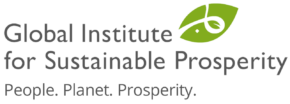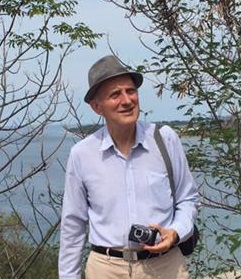Executive Summary
This report reviews Timor-Leste Government’s “roadmap” to sustainable development. This refers to the “roadmap” expounded in public speeches regularly over 2016 and 2017 by the Prime Minster, His Excellency Dr. Rui Maria de Araújo. The report is based on a five-month research study while living in Timor-Leste by the first author. The research is from an economic policy perspective on how a developing country can engage with sustainable development. This study is validated from a previously researched and published “eco-sustainable framework”. This framework has been adopted by the first author as an alternative, and much more viable, model of investment and innovation towards a transitional path of economic development – away from the 20th Century maximum economic growth model with its consequent devastating social fragmentation and ecological destruction, to what is termed in this report a “SDG economic model”.
The roadmap under review sets out in its own terms how the Government prioritises the United Nations’ Sustainable Development Goals (SDGs) in the context of its strong commitment to the 2011-2030 Strategic Development Plan (SDP). On the 25 September 2015, Resolution A/RES/70/1 was passed in the United Nations by all its member states, with the Timor-Leste Government adopting the same resolution two days earlier under Government Resolution Nº34/2015. The Agenda adopted has 17 broad goals (or SDGs) that encompass all aspects of sustainable development. This agreed Agenda specifies 169 targets grounded within the 17 SDGs, requiring each country to form policies in compliance with specific indicators developed to measure progress in achieving the overall goals. In TL’s roadmap, all of the SDGs are included in the timeline, but with no specified targets for each goal. As agreed to by the g7+ group of fragile states, 20 indicators across 13 SDGs have been identified to be monitored (excluding the four ecologically-based SDGs, which are considered “not as urgent”).
The report contains first-hand obtained data by the two academic authors over a period from the 25th of July to the 13th of December 2016, while the first author was on sabbatical leave at Universidade Nacional Timor Lorosa’e (UNTL), and a two-week trip in June-July 2017. The second author is a local East Timorese academic who provided crucial access to personnel and documents, while acting as translator from Tetum and Portuguese into English. He also drove us through all sorts of roads as we visited many municipalities (as they are formally now known). In the process of this collaboration, the local author informed the first author of the rich myths, history and culture of this complex little country. Data was collected from the perspective of examining the role of sustainable development in the prevailing economic growth path. The data was then analysed in order to appreciate the capacity of (i) government policies, (ii) donor-based activities (supported by NGOs), (iii) social (cooperative) organisations, and (iv) private firms and individuals to develop along a sustainable development path, guided by the SDGs. For this undertaking, the academic research is designed without the SDP being presumed as the framework to analyse or review the SDGs. Using the SDP as the basis for reviewing the roadmap would contaminate the analysis by using a policy that is being scrutinised as the research framework. This is not a consistent or acceptable approach to independent research.
Overall, the findings reveal well-intentioned efforts by all in the Timor-Leste Government – executive, parliamentarians and public servants – to follow what can only be described as a commendable effort to chart a roadmap towards sustainable development in Timor-Leste. The problem in implementing this already well specified course is a set of issues that challenge both the Government and its people. The challenges are in three forms:
(i) the ability to instil the SDGs within the established and vigorously defended maximum economic growth planning framework of the country, underpinned by an extractive resource-export dependency with severe negative consequences for social inclusion and environmental protection;
(ii) the capacity to adjust the investment and innovation public funded policies (and donor-supported practices) away from existing rigid efforts on the ground; and
(iii) the scope to alter prevailing “growth” ethos which requires radical change in cultural priorities underlying the critical financial, educational, community, ecological and political systems in the country.
In boldly confronting these three sets of challenges, the roadmap will become the appropriate vehicle necessary for creating the kind of sustainable development that the country has intended.

